BHAGAVAD GĪTA - IN PICTURES
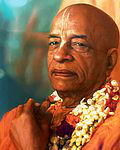 His Divine Grace A.C. Bhaktivedanta Swami Prabhupāda
- The Founder and Acarya of the international Society for Kṛṣṇa
consciousness (ISKCON) and greatest exponent of Kṛṣṇa consciousness in
the western world.
His Divine Grace A.C. Bhaktivedanta Swami Prabhupāda
- The Founder and Acarya of the international Society for Kṛṣṇa
consciousness (ISKCON) and greatest exponent of Kṛṣṇa consciousness in
the western world.
Srila Prabhupāda states: "Before my
presentation of Bhagavad-gīta As It Is, almost all the English editions
of Bhagavad-gīta were introduced to fulfill someones personal ambition.
But our attempt, in presenting Bhagavad-gīta As It Is, is to present
the mission of the Supreme Personality of Godhead, Kṛṣṇa. Our business
is to present the will of Kṛṣṇa, not that of any mundane speculator
like the politician, philosopher or scientist, for they have very
little knowledge of Kṛṣṇa, despite all their other knowledge."
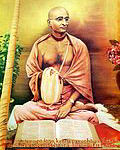 Śrīla Bhaktisiddhānta Sarasvatī Gosvāmī
- The spiritual master of His Divine Grace A.C. Bhaktivedanta Swami
Prabhupāda and foremost scholar and devotee in the recent age.
Śrīla Bhaktisiddhānta Sarasvatī Gosvāmī
- The spiritual master of His Divine Grace A.C. Bhaktivedanta Swami
Prabhupāda and foremost scholar and devotee in the recent age.
Śrīla Bhaktisiddhānta Sarasvatī was born in the holy pilgrimage place
of Jagannatha Puri to Śrīla Bhaktivinoda Thākura, a great Kṛṣṇa
conscious spiritual master in the line of succession coming from Lord
Caitanya. Siddhānta Sarasvatī became editor of his father's journal,
Sajjana-tosani, and founded the Bhagwat Press for publication of Kṛṣṇa
conscious literature. Then in 1918, Siddhānta Sarasvatī accepted the
renounced order of spiritual life, assuming the title Śrīla
Bhaktisiddhānta Sarasvatī Gosvāmī Mahārāja. For the purpose of
propagating Kṛṣṇa consciousness throughout India, he organized the
Gaudiya Math, with sixty-four branches throughout the country. The
headquarters of his mission, the Caitanya gaudiya Math, was located in
Sridhama Mayapur, the birthplace of Lord Caitanya. He would later send
disciples to Europe for missionary work.
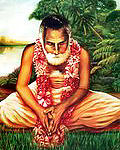 Śrīla Gaura Kiśora dāsa Bābājī Mahārāja - The spiritual master of Bhaktisiddhānta Sarasvatī Gosvāmī and intimate student of Śrīla Thākur Bhaktivinode.
Śrīla Gaura Kiśora dāsa Bābājī Mahārāja - The spiritual master of Bhaktisiddhānta Sarasvatī Gosvāmī and intimate student of Śrīla Thākur Bhaktivinode.
SB 4.2.18, Purport:
There is a practical example set for us by Gaurakiśora dāsa Bābājī
Mahārāja, who used to sit on the side of a latrine to chant Hare Kṛṣṇa.
Many materialistic persons used to come and bother him and disturb his
daily routine of chanting, so to avoid their company he used to sit by
the side of a latrine, where materialistic persons would not go because
of the filth and the obnoxious smell. However, Gaurakiśora dāsa Bābājī
Mahārāja was so great that he was accepted as the spiritual master of
such a great personality as His Divine Grace Oṁ Viṣṇupāda Śrī Śrīmad
Bhaktisiddhānta Sarasvatī Gosvāmī Mahārāja.
 Śrīla Bhaktivinode Thākur - The pioneer of the program to benedict the entire world with Kṛṣṣa consciousness.
Śrīla Bhaktivinode Thākur - The pioneer of the program to benedict the entire world with Kṛṣṣa consciousness.
NOD 11
- Śrīla Bhaktivinode Thākur has sung a nice song in this connection.
While offering himself as a fully surrendered soul, he said, "My mind,
my household affairs, my body, whatever is in my possession, my dear
Lord, I offer to You for Your service. Now You can do with them as You
like. You are the supreme possessor of everything, so if You like You
can kill me, or if You like You can give me protection. All authority
belongs to You. I have nothing to claim as my own."
This self-surrender is called ātma-nivedana. According to different
authorities, "self" is differently defined. "Self" is sometimes
considered to refer to the spirit self, or soul, and "self" is
sometimes considered to refer to the mind or to the body. Full
self-surrender, therefore, means not only surrendering one's self as
spirit soul, but also surrendering one's mind and body to the service
of the Lord.
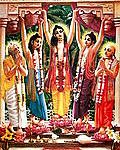 Pancha Tattva - Bhagavad-gita 3.10 - SRI CAITANYA AND HIS ASSOCIATES -
Pancha Tattva - Bhagavad-gita 3.10 - SRI CAITANYA AND HIS ASSOCIATES -
In the middle is Lord Caitanya Mahaprabhu, on His right side is Lord Nityānanda and Advaita Ācārya; on His His left side is Gadādhara Prabhu and Śrīvāsa.
śrī kṛṣṇa caitanya prabhu nityānanda śrī advaita gadādhara śrīvāsādi-gaura-bhakta-vṛnda.
I offer my respectful obeisances to Lord Kṛṣṇa Caitanya and Lord Nityānanda along with Advaita Ācārya, Gadādhara, Śrīvāsa, and all other associates in the line of devotion.
"In this age of Kali, people who are endowed with sufficient intelligence will worship the Lord, who is accompanied by His associates, by performance of saṅkīrtana-yajña." (Bhāg. 11.5.29) Other yajñas prescribed in the Vedic literatures are not easy to perform in this age of Kali, but the saṅkīrtana-yajña is easy and sublime for all purposes.
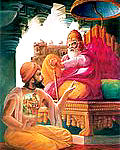 Plate 1 - Bhagavad-gita 1.1 - The blind king Dhṛtarāṣṭra inquires from Sañjaya (the mystic seer) about the events on the battlefield of Kurukṣetra -
Plate 1 - Bhagavad-gita 1.1 - The blind king Dhṛtarāṣṭra inquires from Sañjaya (the mystic seer) about the events on the battlefield of Kurukṣetra -
Dhṛtarāṣṭra is on the throne, and Sañjaya, his secretary, is describing
what is happening on the Battlefield of Kurukṣetra. Because of
Sañjaya's mystic powers, the discourse on the battlefield between Kṛṣṇa
and Arjuna is revealed in his heart.
Dhṛtaraṣṭra is the father of the Kauravas. He was born of the union of
Vyāsa and Ambikā. He was born blind because Ambikā closed her eyes
during conception, out of fear of the sage. He was reputed to have the
strength of ten thousand elephants. The uncle of the Pāṇṇavas whose
attempt to usurp their kingdom for the sake of his own sons resulted in
the Kurukṣetra war. Bhagavad-gīta was related to Dhṛtaraṣṭra by his
secretary as it was being spoken on the Battlefield of Kurukṣetra.
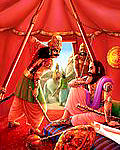 Plate 2 - Bhagavad-gita 1.3 - Droṇācārya
is seated in his tent, and Duryodhana is pointing to the two armies
outside. "O my teacher, behold the great army of the sons of Pandu, so
expertly arranged by your intelligent disciple, the son of Drupada."
Plate 2 - Bhagavad-gita 1.3 - Droṇācārya
is seated in his tent, and Duryodhana is pointing to the two armies
outside. "O my teacher, behold the great army of the sons of Pandu, so
expertly arranged by your intelligent disciple, the son of Drupada."
PURPORT: Duryodhana, a great diplomat, wanted to point out the defects of
Droṇācārya, the great brāhmaṇa commander-in-chief. Droṇācārya had some
political quarrel with King Drupada, the father of Draupadī, who was
Arjuna’s wife. As a result of this quarrel, Drupada performed a great
sacrifice, by which he received the benediction of having a son who
would be able to kill Droṇācārya. Droṇācārya knew this perfectly well,
and yet, as a liberal brāhmaṇa, he did not hesitate to impart all his
military secrets when the son of Drupada, Dhṛṣṭadyumna, was entrusted to
him for military education. Now, on the Battlefield of Kurukṣetra,
Dhṛṣṭadyumna took the side of the Pāṇḍavas, and it was he who arranged
for their military phalanx, after having learned the art from
Droṇācārya. Duryodhana pointed out this mistake of Droṇācārya’s so that
he might be alert and uncompromising in the fighting. By this he wanted
to point out also that he should not be similarly lenient in battle
against the Pāṇḍavas, who were also Droṇācārya’s affectionate students.
Arjuna, especially, was his most affectionate and brilliant student.
Duryodhana also warned that such leniency in the fight would lead to
defeat.
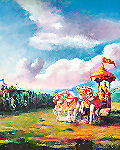 Plate 3 - Bhagavad-gita 1.3 - A
view of the military phalanx on the Battlefield of Kuruksetra. The
chariot of Kṛṣṇa and Arjuna is in the midst of the two armies.
Plate 3 - Bhagavad-gita 1.3 - A
view of the military phalanx on the Battlefield of Kuruksetra. The
chariot of Kṛṣṇa and Arjuna is in the midst of the two armies.
Arjuna said: O infallible one, please draw my chariot between the two
armies so that I may see who is present here, who is desirous of
fighting, and with whom I must contend in this great battle attempt.
PURPORT: Although Lord Kṛṣṇa is the Supreme Personality of
Godhead, out of His causeless mercy He was engaged in the service of
His friend. He never fails in His affection for His devotees, and thus
He is addressed herein as infallible. As charioteer, He had to carry
out the orders of Arjuna, and since He did not hesitate to do so, He is
addressed as infallible. Although He had accepted the position of a
charioteer for His devotee, His supreme position was not challenged. In
all circumstances, He is the Supreme Personality of Godhead, H??ikesa,
the Lord of the total senses. The relationship between the Lord and His
servitor is very sweet and transcendental. The servitor is always ready
to render a service to the Lord, and, similarly, the Lord is always
seeking an opportunity to render some service to the devotee. He takes
greater pleasure in His pure devotee’s assuming the advantageous
postion of ordering Him than He does in being the giver of orders. As
master, everyone is under His orders, and no one is above Him to order
Him. But when he finds that a pure devotee is ordering Him, He obtains
transcendental pleasure, although He is the infallible master of all
circumstances.
As a pure devotee of the Lord, Arjuna had no desire to fight with
his cousins and brothers, but he was forced to come onto the
battlefield by the obstinacy of Duryodhana, who was never agreeable to
any peaceful negotiation. Therefore, he was very anxious to see who the
leading persons present on the battlefield were. Although there was no
question of a peacemaking endeavor on the battlefield, he wanted to see
them again, and to see how much they were bent upon demanding an
unwanted war.
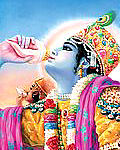 Plate 4 - Bhagavad-gita 1.14 - Kṛṣṇa blows His transcendental conchshell to herald the battle. Arjuna is seen in the background.
Plate 4 - Bhagavad-gita 1.14 - Kṛṣṇa blows His transcendental conchshell to herald the battle. Arjuna is seen in the background.
PURPORT: In contrast with the conchshell blown by Bhīṣmadeva, the
conchshells in the hands of Kṛṣṇa and Arjuna are described as
transcendental. The sounding of the transcendental conchshells
indicated that there was no hope of victory for the other side because
Kṛṣṇa was on the side of the Pāṇḍavas. Jayas tu pāṇḍu-putrāṇāṁ yeṣāṁ
pakṣe janārdanaḥ. Victory is always with persons like the sons of Pāṇḍu
because Lord Kṛṣṇa is associated with them. And whenever and wherever
the Lord is present, the goddess of fortune is also there because the
goddess of fortune never lives alone without her husband. Therefore,
victory and fortune were awaiting Arjuna, as indicated by the
transcendental sound produced by the conchshell of Viṣṇu, or Lord
Kṛṣṇa. Besides that, the chariot on which both the friends were seated
was donated by Agni (the fire-god) to Arjuna, and this indicated that
this chariot was capable of conquering all sides, wherever it was drawn
over the three worlds.
King Yudhiṣṭhira, the son of Kuntī, blew his conchshell, the
Anantavijaya, and Nakula and Sahadeva blew the Sughoṣa and Maṇipuṣpaka.
That great archer the King of Kāśī, the great fighter Śikhaṇḍī,
Dhṛṣṭadyumna, Virāṭa and the unconquerable Sātyaki, Drupada, the sons of
Draupadī, and the others, O King, such as the son of Subhadrā, greatly
armed, all blew their respective conchshells. (Bg. 1.16-18)
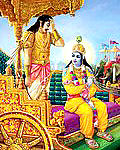 Plate 5 - Bhagavad-gita 1.26-29 - When
Arjuna saw all different grades of friends and relatives, he became
overwhelmed with compassion and said: "Seeing my friends and relatives
present before me in such a fighting spirit, I feel the limbs of my
body quivering and my mouth drying up."
Plate 5 - Bhagavad-gita 1.26-29 - When
Arjuna saw all different grades of friends and relatives, he became
overwhelmed with compassion and said: "Seeing my friends and relatives
present before me in such a fighting spirit, I feel the limbs of my
body quivering and my mouth drying up."
Arjuna
laments upon seeing his relatives standing opposed to him in
battle. Kṛṣṇa, smiling, is ready to console His friend by His
transcendental teachings. Kṛṣṇa said: "My dear Arjuna, how have
these impurities come upon you? They are not at all befitting a man who
knows the progressive values of life. They do not lead to higher
planets, but to infamy. While speaking learned words, you are mourning
for what is not worthy of grief. Those who are wise lament neither for
the living nor the dead."
 Plate 6 - Bhagavad-gita 1.33-35 - The insulting of Draupadī.
Plate 6 - Bhagavad-gita 1.33-35 - The insulting of Draupadī.
Draupadī, the wife of the Pāṇḍava brothers (Arjuna, Mahārāja Yudhiṣṭhira, Bhīma, Sahadeva and Nakula), is being disrobed by
Duryodhana and Duḥśāsana, two sons of
Dhṛtarāṣṭra, after being lost to
them in a gambling match.
Dhṛtarāṣṭra is sitting on the throne. Kṛṣṇa is becoming Draupadī's
infinite robe to save her from being seen naked by the assembly.
Because of this incident and other offenses to the Pāṇḍavas, Kṛṣṇa
wanted the battle to take place and the miscreants to be killed.
SB
1.15.10, Purport: Queen Draupadī had a beautiful bunch of hair which
was sanctified in the ceremonial function of Rājasūya-yajña. But when
she was lost in a bet, Duḥśāsana touched her glorified hair to insult
her. Draupadī then fell down at the lotus feet of Lord Kṛṣṇa, and Lord
Kṛṣṇa decided that all the wives of Duḥśāsana and company should have
their hair loosened as a result of the Battle of Kurukṣetra. Thus after
the Battle of Kurukṣetra, after all the sons and grandsons of
Dhṛtarāṣṭra died in battle, all the wives of the family were obliged to
loosen their hair as widows. In other words, all the wives of the Kuru
family became widows because of Duḥśāsana's insulting a great devotee
of the Lord. The Lord can tolerate insults upon Himself by any
miscreant because the father tolerates even insults from the son. But
He never tolerates insults upon His devotees. By insulting a great
soul, one has to forego all the results of pious acts and benedictions
also.
SB 1.15.16, Purport: Karṇa was defeated many times, not
only by Arjuna but also by Bhīmasena. He was the king of the kingdom of
Bengal, Orissa and Madras combined. Later on he took an active part in
the Rājasūya sacrifice of Mahārāja Yudhiṣṭhira, and when there was
gambling between the rival brothers, designed by Śakuni, Karṇa took
part in the game, and he was very pleased when Draupadī was offered as
a bet in the gambling. This fed his old grudge. When Draupadī was in
the game he was very enthusiastic to declare the news, and it is he who
ordered Duḥśāsana to take away the garments of both the Pāṇḍavas and
Draupadī. He asked Draupadī to select another husband because, being
lost by the Pāṇḍavas, she was rendered a slave of the Kurus. He was
always an enemy of the Pāṇḍavas, and whenever there was an opportunity,
he tried to curb them by all means.
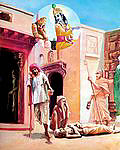 Plate 7 - Bhagavad-gita 2.11 - The Blessed Lord said: "The wise lament neither for the living nor the dead."
Plate 7 - Bhagavad-gita 2.11 - The Blessed Lord said: "The wise lament neither for the living nor the dead."
A devotee of the Lord comes upon a man lying dead on the ground and beside him two other men in conditions of bodily misery.
The
humble sage, by virtue of true knowledge, sees with equal vision a
learned and gentle brāhmaṇa, a cow, an elephant, a dog and a dog-eater
[outcaste]. A Kṛṣṇa conscious person does not make any distinction
between species or castes.
The brāhmaṇa and the outcaste may
be different from the social point of view, or a dog, a cow, or an
elephant may be different from the point of view of species, but these
differences of body are meaningless from the viewpoint of a learned
transcendentalist. This is due to their relationship to the Supreme,
for the Supreme Lord, by His plenary portion as Paramātmā, is present
in everyone’s heart. Such an understanding of the Supreme is real
knowledge. As far as the bodies are concerned in different castes or
different species of life, the Lord is equally kind to everyone because
He treats every living being as a friend yet maintains Himself as
Paramātmā regardless of the circumstances of the living entities.
The
Lord as Paramātmā is present both in the outcaste and in the brāhmaṇa,
although the body of a brāhmaṇa and that of an outcaste are not the
same. The bodies are material productions of different modes of
material nature, but the soul and the Supersoul within the body are of
the same spiritual quality. The similarity in the quality of the soul
and the Supersoul, however, does not make them equal in quantity, for
the individual soul is present only in that particular body, whereas
the Paramātmā is present in each and every body. A Kṛṣṇa conscious
person has full knowledge of this, and therefore he is truly learned
and has equal vision. The similar characteristics of the soul and
Supersoul are that they are both conscious, eternal and blissful. But
the difference is that the individual soul is conscious within the
limited jurisdiction of the body, whereas the Supersoul is conscious of
all bodies. The Supersoul is present in all bodies without distinction.
(Bg 5.18)
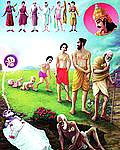 Plate 8 - Bhagavad-gita 2.13 - The soul changes bodies as a person changes garments.
Plate 8 - Bhagavad-gita 2.13 - The soul changes bodies as a person changes garments.
"As
the embodied soul continually passes, in this body, from boyhood to
youth to old age, the soul similarly passes into another body at death.
The self-realized soul is not bewildered by such a change."
The conditioned spirit soul is seen changing bodies from childhood to youth
to old age to death and then into the womb of another mother. Verse 22
is also illustrated by this same picture. Above, a man is changing
garments, and below the soul is changing bodies.
Since every living entity is an individual soul, each is changing
his body every moment, manifesting sometimes as a child, sometimes as a
youth, and sometimes as an old man. Yet the same spirit soul is there
and does not undergo any change. This individual soul finally changes
the body at death and transmigrates to another body; and since it is
sure to have another body in the next birth—either material or
spiritual—there was no cause for lamentation by Arjuna on account of
death, neither for Bhīṣma nor for Droṇa, for whom he was so much
concerned. Rather, he should rejoice for their changing bodies from old
to new ones, thereby rejuvenating their energy. Such changes of body
account for varieties of enjoyment or suffering, according to one’s
work in life. So Bhīṣma and Droṇa, being noble souls, were surely going
to have either spiritual bodies in the next life, or at least life in
heavenly bodies for superior enjoyment of material existence. So, in
either case, there was no cause of lamentation.
Any man who has
perfect knowledge of the constitution of the individual soul, the
Supersoul, and nature—both material and spiritual—is called a dhīra or
a most sober man. Such a man is never deluded by the change of bodies.
The Māyāvādī theory of oneness of the spirit soul cannot be entertained
on the ground that spirit soul cannot be cut into pieces as a
fragmental portion. Such cutting into different individual souls would
make the Supreme cleavable or changeable, against the principle of the
Supreme Soul being unchangeable.
 Plate 9 - Bhagavad-gita 2.13 - The body changes, but the soul remains the same.
Plate 9 - Bhagavad-gita 2.13 - The body changes, but the soul remains the same.
The many, many frames on a reel of movie film, when seen consecutively,
appear as one picture on the screen, although there are actually many
different pictures. Similiarly, we see a man as localized (above), but
actually his body is changing at every second. All this is happening
without the notice of the viewer. However the soul within the heart
(seen as a sparkling star) does not change; she remains eternally the
same.
There
is no endurance of the changing body. That the body is changing every
moment by the actions and reactions of the different cells is admitted
by modern medical science; and thus growth and old age are taking place
in the body. But the spirit soul exists permanently, remaining the same
despite all changes of the body and the mind. That is the difference
between matter and spirit. By nature, the body is ever changing, and
the soul is eternal. This conclusion is established by all classes of
seers of the truth, both impersonalist and personalist. In the Viṣṇu
Purāṇa it is stated that Viṣṇu and His abodes all have self-illuminated
spiritual existence. “Jyotīṁṣi viṣṇur bhavanāni viṣṇuḥ.” The words
existent and nonexistent refer only to spirit and matter. That is the
version of all seers of truth.
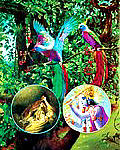 Plate 10 - Bhagavad-gita 2.22 - Kṛṣṇa
and the living entity are seated on the tree of the body. The bird on
the left is captivated by the fruits of the tree, while the friendly
bird on the right acts as witness and waits for His friend to turn to
Him.
Plate 10 - Bhagavad-gita 2.22 - Kṛṣṇa
and the living entity are seated on the tree of the body. The bird on
the left is captivated by the fruits of the tree, while the friendly
bird on the right acts as witness and waits for His friend to turn to
Him.
The Vedas compare the soul and the Supersoul to two friendly birds sitting
on the same tree. One of the birds (the individual atomic soul) is
eating the fruit of the tree, and the other bird (Kṛṣṇa) is simply
watching His friend. Of these two birds—although they are the same in
quality—one is captivated by the fruits of the material tree, while the
other is simply witnessing the activities of His friend. Kṛṣṇa is the
witnessing bird, and Arjuna is the eating bird. Although they are
friends, one is still the master and the other is the servant.
Forgetfulness of this relationship by the atomic soul is the cause of
one’s changing his position from one tree to another or from one body
to another. The jīva soul is struggling very hard on the tree of the
material body, but as soon as he agrees to accept the other bird as the
supreme spiritual master—as Arjuna agreed to do by voluntary surrender
unto Kṛṣṇa for instruction—the subordinate bird immediately becomes
free from all lamentations. Both the Kaṭha Upaniṣad and Śvetāśvatara
Upaniṣad confirm this. (Bg 2.22 )
 Plate 11 - Bhagavad-gita 2.62-63 - ATTACHMENT TO THE OBJECTS OF THE SENSES
Plate 11 - Bhagavad-gita 2.62-63 - ATTACHMENT TO THE OBJECTS OF THE SENSES
The path of destruction of the conditioned soul's intelligence due to dictation of the senses and mind is portrayed. "While contemplating the objects of the senses, a person develops attachment for them, and from such attachment lust develops, and from lust anger arises. From anger, delusion arises, and from delusion bewilderment of memory. When memory is bewildered, intelligence is lost, and when intelligence is lost, one falls down again into the material pool."
One who can control his senses by practicing the regulated principles of freedom can obtain the complete mercy of the Lord and thus become free from all attachment and aversion.
One who is not Kṛṣṇa conscious is subjected to material desires while contemplating the objects of senses. The senses require real engagements, and if they are not engaged in the transcendental loving service of the Lord, they will certainly seek engagement in the service of materialism. In the material world everyone, including Lord Śiva and Lord Brahmā—to say nothing of other demigods in the heavenly planets—is subjected to the influence of sense objects, and the only method to get out of this puzzle of material existence is to become Kṛṣṇa conscious. Lord Śiva was deep in meditation, but when Pārvatī agitated him for sense pleasure, he agreed to the proposal, and as a result Kārtikeya was born.
 Plate 12 - Bhagavad-gita 3.10 - Harinam Saṅkīrtana-yajña for this age of Kali-yuga.
Plate 12 - Bhagavad-gita 3.10 - Harinam Saṅkīrtana-yajña for this age of Kali-yuga.
“In this age of Kali, people who are endowed with sufficient intelligence will worship the Lord, who is accompanied by His associates, by performance of saṅkīrtana-yajña.” (Bhāg. 11.5.29) Other yajñas prescribed in the Vedic literatures are not easy to perform in this age of Kali, but the saṅkīrtana-yajña is easy and sublime for all purposes. Lord Caitanya, wearing yellow robes, leads thousands of followers in the congregational chanting of the holy names of Sri Krsna. His four associates are: 1. Nityananda Prabhu, wearing purple robes, at Lord Caitanya's immediate right. 2. Advaita Prabhu, wearing white robes, at Nityananda's immediate right. 3. Gadadhara Pandit at Lord Caitanya's immediate left. 4. Srivasa Pandit at Gadadhara's immediate left.
The Lord created this material world for the conditioned souls to learn how to perform yajñas (sacrifice) for the satisfaction of Viṣṇu, so that while in the material world they can live very comfortably without anxiety. Then after finishing the present material body, they can enter into the kingdom of God. That is the whole program for the conditioned soul. By performance of yajña, the conditioned souls gradually become Kṛṣṇa conscious and become godly in all respects. In this age of Kali, the saṅkīrtana-yajña (the chanting of the names of God) is recommended by the Vedic scriptures, and this transcendental system was introduced by Lord Caitanya for the deliverance of all men in this age. Saṅkīrtana-yajña and Kṛṣṇa consciousness go well together. Lord Kṛṣṇa in His devotional form (as Lord Caitanya) is mentioned in the Śrīmad-Bhāgavatam as follows, with special reference to the saṅkīrtana-yajña:
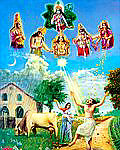 Plate 13 - Bhagavad-gita 3.12 - PERFORMANCE OF SACRIFICE WILL SUPPLY ALL NEEDS
Plate 13 - Bhagavad-gita 3.12 - PERFORMANCE OF SACRIFICE WILL SUPPLY ALL NEEDS
"The demigods, being pleased by sacrifices, will also please you; thus nourishing one another, there will reign general prosperity for all." Devotees are pictured engaging in sankirtana-yajna. Above the clouds are the demigods, and above them the Lord, who is pleased by the singing of His holy names.
The demigods are, left to right, Candra (the moon-god), Indra (the god of rain), Vivasvan (the sun-god) and Vayu (the god of air). At the right is Laksmi, the goddess of fortune. The demigods are empowered administrators of material affairs. The supply of air, light, water and all other benedictions for maintaining the body and soul of every living entity are entrusted to the demigods, who are innumerable assistants in different parts of the body of the Supreme Personality of Godhead. Their pleasures and displeasures are dependant on the performance of yajñas by the human being. Some of the yajñas are meant to satisfy particular demigods; but even in so doing, Lord Viṣṇu is worshiped in all yajñas as the chief beneficiary. It is stated also in the Bhagavad-gītā that Kṛṣṇa Himself is the beneficiary of all kinds of yajñas: bhoktāraṁ yajña-tapasām. Therefore, ultimate satisfaction of the yajñapati is the chief purpose of all yajñas. When these yajñas are perfectly performed, naturally the demigods in charge of the different departments of supply are pleased, and there is no scarcity in the supply of natural products. Performance of yajñas has many side benefits, ultimately leading to liberation from the material bondage. By performance of yajñas, all activities become purified, as it is stated in the Vedas:
 Plate 14 - Bhagavad-gita 3.37-39 - THE SOUL IS COVERED BY LUST.
Plate 14 - Bhagavad-gita 3.37-39 - THE SOUL IS COVERED BY LUST.
"The Blessed Lord said: It is lust only, Arjuna, which is born of contact with the material modes of passion and later transformed into wrath, and which is the all-devouring, sinful enemy of this world. As fire is covered by smoke, as a mirror is covered by dust, or as the embryo is covered by the womb, similarly, the living entity is covered by different degrees of this lust."
The living entity in the center is being enveloped by fiery lust. The analogy in verse 38 is illustrated here. At the top is fire covered by smoke, symbolizing human life. At the bottom left is a mirror covered by dust, symbolizing animal life. At the bottom right is an embryo covered by the womb, symbolizing tree and plant life.
When a living entity comes in contact with the material creation, his eternal love for Kṛṣṇa is transformed into lust, in association with the mode of passion. Or, in other words, the sense of love of God becomes transformed into lust, as milk in contact with sour tamarind is transformed into yogurt. Then again, when lust is unsatisfied, it turns into wrath; wrath is transformed into illusion, and illusion continues the material existence. Therefore, lust is the greatest enemy of the living entity, and it is lust only which induces the pure living entity to remain entangled in the material world. Wrath is the manifestation of the mode of ignorance; these modes exhibit themselves as wrath and other corollaries. If, therefore, the modes of passion, instead of being degraded into the modes of ignorance, are elevated to the modes of goodness by the prescribed method of Iiving and acting, then one can be saved from the degradation of wrath by spiritual attachment.
There are three degrees of covering of the living entity by which his pure consciousness is obscured. This covering is but lust under different manifestations like smoke in the fire, dust on the mirror, and the womb about the embryo. When lust is compared to smoke, it is understood that the fire of the living spark can be a little perceived. In other words, when the living entity exhibits his Kṛṣṇa consciousness slightly, he may be likened to the fire covered by smoke. Although fire is necessary where there is smoke, there is no overt manifestation of fire in the early stage. This stage is like the beginning of Kṛṣṇa consciousness. The dust on the mirror refers to a cleansing process of the mirror of the mind by so many spiritual methods. The best process is to chant the holy names of the Lord. The embryo covered by the womb is an analogy illustrating a helpless position, for the child in the womb is so helpless that he cannot even move. This stage of living condition can be compared to that of the trees. The trees are also living entities, but they have been put in such a condition of life by such a great exhibition of lust that they are almost void of all consciousness. The covered mirror is compared to the birds and beasts, and the smoke covered fire is compared to the human being. In the form of a human being, the living entity may revive a little Kṛṣṇa consciousness, and, if he makes further development, the fire of spiritual life can be kindled in the human form of life. By careful handling of the smoke in the fire, the fire can be made to blaze. Therefore the human form of life is a chance for the living entity to escape the entanglement of material existence. In the human form of life, one can conquer the enemy, lust, by cultivation of Kṛṣṇa consciousness under able guidance.
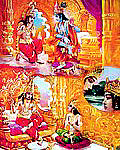 Plate 15 - Bhagavad-gita 4.1 - THE BLESSED LORD INSTRUCTS THE SCIENCE OF YOGA
Plate 15 - Bhagavad-gita 4.1 - THE BLESSED LORD INSTRUCTS THE SCIENCE OF YOGA
"The Blessed Lord said: I instructed this imperishable science of yoga to the sun-god, Vivasvān, and Vivasvān instructed it to Manu, the father of mankind, and Manu in turn instructed it to Ikṣvāku." At the top, Krsna teaches the science of Bhagavad-gita to Vivasvan, the sun-god. Below Vivasvan teaches his son, Manu, and in the circle at the right, Manu teaches his son Iksvaku.
"In the beginning of the Tretā-yuga [millennium] this science of the relationship with the Supreme was delivered by Vivasvān to Manu. Manu, being the father of mankind, gave it to his son Mahārāja Ikṣvāku, the King of this earth planet and forefather of the Raghu dynasty in which Lord Rāmacandra appeared. Therefore, Bhagavad-gītā existed in the human society from the time of Mahārāja Ikṣvāku."
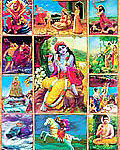 Plate 16 - Bhagavad-gita 4.7 - THE LORD'S INCARNATIONS
Plate 16 - Bhagavad-gita 4.7 - THE LORD'S INCARNATIONS
"Whenever and wherever there is a decline in religious practice, O descendant of Bharata, and a predominant rise of irreligion—at that time I descend Myself."
In the center square, Kṛṣṣa is shown in His original two-handed form, holding a flute. Surrounding Him are ten of His eternal incarnations, pictured in the order in which they appear in the material world, beginning clockwise from the lower left-hand corner.
1.
Matsya, the fish incarnation, is saving the Vedas.
2. Kurma, the tortoise incarnation, is holding the hill on His back.
3. Varaha, the boar incarnation, is fighting with the demon Hiranyaksa.
4. Nrsimhadeva, the lion incarnation, is killing the demon Hiranyakasipu.
5. Vamanadeva, the dwarf incarnation, is begging some land from King Bali.
6. Parasurama is killing the demoniac ksatriyas.
7. Lord Ramacandra is going off into exile with His wife, Sita, and brother, Laksmana.
8. Krsna is lifting Govardhana Hill, and beside Him is His brother Balarama.
9. Lord Buddha, teaching Ahimsa, nonviolence, non-killing of animals.
10. Lord Kalki is riding on His horse, killing all the demons and thus liberating them.
"The avatāra, or incarnation of Godhead, descends from the kingdom of God for material manifestation. And the particular form of the Personality of Godhead who so descends is called an incarnation, or avatāra. Such incarnations are situated in the spiritual world, the kingdom of God. When they descend to the material creation, they assume the name avatāra." There are various kinds of avatāras, such as puruṣāvatāras, guṇāvatāras, līlāvatāras, śaktyāveśa avatāras, manvantara-avatāras and yugāvatāras—all appearing on schedule all over the universe. But Lord Kṛṣṇa is the primeval Lord, the fountainhead of all avatāras. Lord Śrī Kṛṣṇa descends for the specific purposes of mitigating the anxieties of the pure devotees, who are very anxious to see Him in His original Vṛndāvana pastimes. Therefore, the prime purpose of the Kṛṣṇa avatāra is to satisfy His unalloyed devotees.
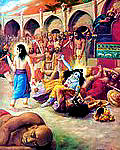 Plate 17 - Bhagavad-gita 4.8 - KRISHNA INCARNATES TO DELIVER THE PIOUS AND ANNHIHILATE EVIL
Plate 17 - Bhagavad-gita 4.8 - KRISHNA INCARNATES TO DELIVER THE PIOUS AND ANNHIHILATE EVIL
"In order to deliver the pious and to annihilate the miscreants, as well as to reestablish the principles of religion, I advent Myself millennium after millennium."
Kṛṣṇa's uncle, Kaṁsa, is being killed by the Lord, Balarama, Kṛṣṇa's brother, is standing on Kṛṣṇa's right. Behind Kṛṣṇa's are His parents, Devaki and Vasudeva, who were imprisoned by Kaṁsa but are here freed by their son. This scene takes place in Kaṁsa's wrestling arena in Mathura province.
SB 10.44: The Killing of Kaṁsa: Deciding to wrestle, Lord Kṛṣṇa faced off against Cāṇūra, and Lord Baladeva took on Muṣṭika. Battling arm to arm, head to head, knee to knee and chest to chest, the opponents attacked each other so fiercely that they appeared to be harming even their own bodies. The ladies in the arena, seeing the violent battle, began to condemn the King and all the members of the assembly: "A respectable audience should never have allowed a wrestling match between such huge wrestlers, whose limbs are as tough as lightning bolts, and such tender young boys, who are just entering youth. An intelligent person should never enter an assembly if he sees injustice being done there." Because Vasudeva and Devakī did not fully understand the power of Kṛṣṇa and Balarāma, they became extremely unhappy when they heard the women of the audience speak these words. Śrī Kṛṣṇa then grabbed Cāṇūra's arms, whirled him around several times and threw him to the ground, killing him. Muṣṭika met a similar fate: after being struck powerfully by Lord Baladeva's palm, he began vomiting blood and then fell down dead. Thereupon the wrestlers named Kūṭa, Śala and Tośala came forward, but Kṛṣṇa and Balarāma easily killed them with the blows of Their fists and feet. The remaining wrestlers, fearing for their lives, all fled.
Except for Kaṁsa, everyone present cheered Kṛṣṇa and Balarāma. The King, in a rage, stopped the festive music and ordered that Vasudeva, Nanda, Ugrasena and all the cowherds be severely punished and that Kṛṣṇa and Balarāma be driven from the assembly. Kṛṣṇa became furious when He heard Kaṁsa speak this way, and He instantly leapt onto the lofty royal dais. He grabbed Kaṁsa by the hair, hurled him down onto the floor of the wrestling ring and threw Himself on top of him. In this way, Kaṁsa met his death. Because out of fear Kaṁsa had always thought of Kṛṣṇa, after his death he gained the liberation of having a form like the Lord's.
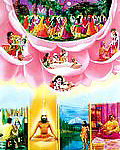 Plate 18 - Bhagavad-gita 4.11 - THE SUPREME DESTINATION OF ALL YOGIS
Plate 18 - Bhagavad-gita 4.11 - THE SUPREME DESTINATION OF ALL YOGIS
"All of them - as they surrender unto Me - I reward accordingly. Everyone follows My path in all respects, O son of Pṛthā." At the top Kṛṣṇa is dancing with His purest devotees as a lover. On the lotus petals the Lord is reciprocating with His devotees as a son, as a friend and as a master. Below left, a devotee in the material world is associating with Krsna personally by painting His transcendental form. Next, an impersonalist, by his meditation, is merging with the brahmajyoti, the spiritual effulgence emanating from the Lords body. On the right a mystic yogi is walking on the water. On the far right a fruitive worker is receiving the fruits of his labor.
Eveyone is searching for Kṛṣṇa in the different aspects of His manifestations. Kṛṣṇa, the Supreme Personality of Godhead, is partially realized in His impersonal brahmajyoti effulgence and as the all-pervading Supersoul dwelling within everything, including the particles of atoms. But Kṛṣṇa is only fully realized by His pure devotees. Consequently, Kṛṣṇa is the object of everyone’s realization, and thus anyone and everyone is satisfied according to one’s desire to have Him. In the transcendental world also, Kṛṣṇa reciprocates with His pure devotees in the transcendental attitude, just as the devotee wants Him. One devotee may want Kṛṣṇa as supreme master, another as his personal friend, another as his son, and still another as his lover. Kṛṣṇa rewards all the devotees equally, according to their different intensities of love for Him.
 Plate 19 - Bhagavad-gita 5.4-6 - Only the ignorant speak of karma-yoga and devotional service as being different from the analytical study of the material world [sāṅkhya]. Those who are actually learned say that he who applies himself well to one of these paths achieves the results of both.
Plate 19 - Bhagavad-gita 5.4-6 - Only the ignorant speak of karma-yoga and devotional service as being different from the analytical study of the material world [sāṅkhya]. Those who are actually learned say that he who applies himself well to one of these paths achieves the results of both.
Above, a devotee is engaged in various devotional activities for the Deities (authorized incarnations of the Lord, who come in this form to accept our service). Below, a sāṅkhya-yogi engages in the analytical study of matter and spirit. After some time he realizes the Lord (the forms of Radha and Krsna include all other forms of the Lord) within his heart, and then he engages in devotional service.
The aim of the analytical study of the material world is to find the soul of existence. The soul of the material world is Viṣṇu, or the Supersoul. Devotional service to the Lord entails service to the Supersoul. One process is to find the root of the tree, and next to water the root. The real student of sāṅkhya philosophy finds the root of the material world, Viṣṇu, and then, in perfect knowledge, engages himself in the service of the Lord. Therefore, in essence, there is no difference between the two because the aim of both is Viṣṇu. Those who do not know the ultimate end say that the purposes of sāṅkhya and karma-yoga are not the same, but one who is learned knows the unifying aim in these different processes.
 Plate 20 - Bhagavad-gita 5.18 - A sage sees the Supersoul accompanying the sparklike individual soul in each body.
Plate 20 - Bhagavad-gita 5.18 - A sage sees the Supersoul accompanying the sparklike individual soul in each body.
"The humble sage, by virtue of true knowledge, sees with equal vision a learned and gentle brāhmaṇa, a cow, an elephant, a dog and a dog-eater [outcaste] ."
A Kṛṣṇa conscious person does not make any distinction between species or castes. The brāhmaṇa and the outcaste may be different from the social point of view, or a dog, a cow, or an elephant may be different from the point of view of species, but these differences of body are meaningless from the viewpoint of a learned transcendentalist. This is due to their relationship to the Supreme, for the Supreme Lord, by His plenary portion as Paramātmā, is present in everyone’s heart. Such an understanding of the Supreme is real knowledge. As far as the bodies are concerned in different castes or different species of life, the Lord is equally kind to everyone because He treats every living being as a friend yet maintains Himself as Paramātmā regardless of the circumstances of the living entities. The Lord as Paramātmā is present both in the outcaste and in the brāhmaṇa, although the body of a brāhmaṇa and that of an outcaste are not the same. The bodies are material productions of different modes of material nature, but the soul and the Supersoul within the body are of the same spiritual quality. The similarity in the quality of the soul and the Supersoul, however, does not make them equal in quantity, for the individual soul is present only in that particular body, whereas the Paramātmā is present in each and every body. A Kṛṣṇa conscious person has full knowledge of this, and therefore he is truly learned and has equal vision. The similar characteristics of the soul and Supersoul are that they are both conscious, eternal and blissful. But the difference is that the individual soul is conscious within the limited jurisdiction of the body, whereas the Supersoul is conscious of all bodies. The Supersoul is present in all bodies without distinction.
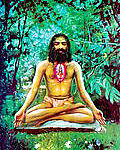 Plate 21 - Bhagavad-gita 6.11-14 - YOGAMEDITATION ON THE SUPERSOUL WITHIN THE HEART - The goal of yoga is seen as Visnu in the yogi's heart.
Plate 21 - Bhagavad-gita 6.11-14 - YOGAMEDITATION ON THE SUPERSOUL WITHIN THE HEART - The goal of yoga is seen as Visnu in the yogi's heart.
"One should hold one’s body, neck and head erect in a straight line and stare steadily at the tip of the nose. Thus with an unagitated, subdued mind, devoid of fear, completely free from sex life, one should meditate upon Me within the heart and make Me the ultimate goal of life."
To practice yoga, one should go to a secluded place and should lay kuśa-grass on the ground and then cover it with a deerskin and a soft cloth. The seat should neither be too high nor too low and should be situated in a sacred place. The yogī should then sit on it very firmly and should practice yoga by controlling the mind and the senses, purifying the heart and fixing the mind on one point.
The goal of life is to know Kṛṣṇa, who is situated within the heart of every living being as Paramātmā, the four-handed Viṣṇu form. The yoga process is practiced in order to discover and see this localized form of Viṣṇu, and not for any other purpose. The localized Viṣṇu-mūrti is the plenary representation of Kṛṣṇa dwelling within one’s heart. One who has no program to realize this Viṣṇu-murti is uselessly engaged in mock-yoga practice and is certainly wasting his time. Kṛṣṇā is the ultimate goal of life, and the Viṣṇu-murti situated in one’s heart is the object of yoga practice. To realize this Viṣṇu-murti within the heart, one has to observe complete abstinence from sex life; therefore one has to leave home and live alone in a secluded place, remaining seated as mentioned above.
One who is not self-controlled and whose mind is not undisturbed cannot practice meditation. Therefore, in the Bṛhan-Nāradīya Purāṇa it is said that in the Kali-yuga (the present yuga or age) when people in general are short-lived, slow in spiritual realization and always disturbed by various anxieties, the best means of spiritual realization is chanting the holy name of the Lord. harer nāma harer nāma harer nāmaiva kevalam kalau nāsty eva nāsty eva nāsty eva gatir anyathā. "In this age of quarrel and hypocrisy the only means of deliverance is chanting the holy name of the Lord. There is no other way. There is no other way. There is no other way."
 Plate 22 - Bhagavad-gita 6.24 - PRACTICE YOGA WITH DETERMINATION AND FAITH
Plate 22 - Bhagavad-gita 6.24 - PRACTICE YOGA WITH DETERMINATION AND FAITH
The little sparrow is shown here trying to drink up the ocean to retrieve her lost eggs, which have been washed away by the ocean. Because of her determination, Lord Visnu has sent Garuda, who is standing behind her, to threaten the ocean into giving back the eggs. "One should engage oneself in the practice of yoga with undeviating determination and faith. One should abandon, without exception, all material desires born of false ego and thus control all the senses on all sides by the mind."
The yoga practitioner should be determined and should patiently prosecute the practice without deviation. One should be sure of success at the end and pursue this course with great perserverance, not becoming discouraged if there is any delay in the attainment of success. Success is sure for the rigid practitioner.
"The process of bhakti-yoga can be executed successfully with full-hearted enthusiasm, perseverance, and determination by following the prescribed duties in the association of devotees and by engaging completely in activities of goodness."
As for determination, one should follow the example of the sparrow who lost her eggs in the waves of the ocean. A sparrow laid her eggs on the shore of the ocean, but the big ocean carried away the eggs on its waves. The sparrow became very upset and asked the ocean to return her eggs. The ocean did not even consider her appeal. So the sparrow decided to dry up the ocean. She began to pick out the water in her small beak, and everyone laughed at her for her impossible determination. The news of her activity spread, and at last Garuḍa, the gigantic bird carrier of Lord Viṣṇu, heard it. He became compassionate toward his small sister bird, and so he came to see the sparrow. Garuḍa was very pleased by the determination of the small sparrow, and he promised to help. Thus Garuḍa at once asked the ocean to return her eggs lest he himself take up the work of the sparrow. The ocean was frightened at this, and returned the eggs. Thus the sparrow became happy by the grace of Garuḍa.
 Plate 23 - Bhagavad-gita 6.34 - TO CONTROL THE SENSES IS DIFFICULT
Plate 23 - Bhagavad-gita 6.34 - TO CONTROL THE SENSES IS DIFFICULT
The chariot of the body. The five horses represent the five senses (tongue, eyes, ears, nose and skin). The reins, the driving instrument, symbolize the mind, the driver is the intelligence, and the passenger is the spirit soul. "For the mind is restless, turbulent, obstinate and very strong, O Kṛṣṇa, and to subdue it is, it seems to me, more difficult than controlling the wind."
The individual is the passenger in the car of the material body, and intelligence is the driver. Mind is the driving instrument, and the senses are the horses. The self is thus the enjoyer or sufferer in the association of the mind and senses. So it is understood by great thinkers." Intelligence is supposed to direct the mind, but the mind is so strong and obstinate that it often overcomes even one’s own intelligence. Such a strong mind is supposed to be controlled by the practice of yoga, but such practice is never practical for a worldly person like Arjuna. And what can we say of modern man? The simile used here is appropriate: one cannot capture the blowing wind. And it is even more difficult to capture the turbulent mind. The easiest way to control the mind, as suggested by Lord Caitanya, is chanting "Hare Kṛṣṇa," the great mantra for deliverance, in all humility. The method prescribed is sa vai manaḥ kṛṣṇa-padāravindayoḥ: one must engage one’s mind fully in Kṛṣṇa. Only then will there remain no other engagements to agitate the mind.
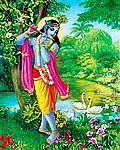 Plate 24 - Bhagavad-gita 6.47 - Syamasundara, the object of the ideal yogi's meditation
Plate 24 - Bhagavad-gita 6.47 - Syamasundara, the object of the ideal yogi's meditation
"And of all yogīs, he who always abides in Me with great faith, worshiping Me in transcendental loving service, is most intimately united with Me in yoga and is the highest of all."
The culmination of all kinds of yoga practices lies in bhakti-yoga. All other yogas are but means to come to the point of bhakti in bhakti-yoga. Yoga actually means bhakti-yoga; all other yogas are progressions toward the destination of bhakti-yoga. From the beginning of karma-yoga to the end of bhakti-yoga is a long way to self-realization. Karma-yoga, without fruitive results, is the beginning of this path. When karma-yoga increases in knowledge and renunciation, the stage is called jñāna-yoga. When jñāna-yoga increases in meditation on the Supersoul by different physical processes, and the mind is on Him, it is called aṣṭāṅga-yoga. And, when one surpasses the aṣṭāṅga-yoga and comes to the point of the Supreme Personality of Godhead Kṛṣṇa, it is called bhakti-yoga, the culmination.
Factually, bhakti-yoga is the ultimate goal, but to analyze bhakti-yoga minutely one has to understand these other yogas. The yogī who is progressive is therefore on the true path of eternal good fortune. One who sticks to a particular point and does not make further progress is called by that particular name: karma-yogī, jñāna-yogī or dhyāna-yogī, rāja-yogī, haṭha-yogī, etc. If one is fortunate enough to come to the point of bhakti-yoga, it is to be understood that he has surpassed all the other yogas. Therefore, to become Kṛṣṇa conscious is the highest stage of yoga, just as, when we speak of Himalayan, we refer to the world’s highest mountains, of which the highest peak, Mount Everest, is considered to be the culmination.
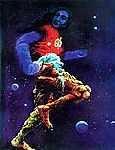 Plate 25 - Bhagavad-gita 7.4-5 - Kṛṣṇas material and spiritual energies.
Plate 25 - Bhagavad-gita 7.4-5 - Kṛṣṇas material and spiritual energies.
The Spirit soul sustains the material universe of earth, water, fire, etc. (represented as the body). The subtle body-mind, intelligence and fales ego-is represented by the red dot on the forehead. The soul is seated in the heart of the gross body. "Earth, water, fire, air, ether, mind, intelligence and false ego—altogether these eight comprise My separated material energies."
Besides this inferior nature, O mighty-armed Arjuna, there is a superior energy of Mine, which are all living entities who are struggling with material nature and are sustaining the universe.
"Yet there is another nature, which is eternal and is transcendental to this manifested and unmanifested matter. It is supreme and is never annihilated." When all in this world is annihilated, that part remains as it is. PURPORT: Kṛṣṇa’s superior spiritual energy is transcendental and eternal. It is beyond all the changes of material nature, which is manifest and annihilated during the days and nights of Brahmā.
Kṛṣṇa’s superior energy is completely opposite in quality to material nature. Superior and inferior nature are explained in the Seventh Chapter.
Here it is clearly mentioned that living entities belong to the superior nature (or energy) of the Supreme Lord. The inferior energy is matter manifested in different elements, namely earth, water, fire, air, ether, mind, intelligence and false ego. Both forms of material nature, namely gross (earth, etc.) and subtle (mind, etc.), are products of the inferior energy. The living entities, who are exploiting these inferior energies for different purposes, are the superior energy of the Supreme Lord, and it is due to this energy that the entire material world functions. The cosmic manifestation has no power to act unless it is moved by the superior energy, the living entity. Energies are always controlled by the energetic, and therefore living entities are always controlled by the Lord—they have no independant existence. They are never equally powerful, as unintelligent men think. The distinction between the living entities and the Lord is described in Śrīmad-Bhāgavatam as follows (10.87.30):
 Plate 26 - Bhagavad-gita 7.15-16 - THE PIOUS SURRENDER, THE IMPIOUS DO NOT
Plate 26 - Bhagavad-gita 7.15-16 - THE PIOUS SURRENDER, THE IMPIOUS DO NOT
At the top Laksmi-Narayana are shown in the Lord's transcendental abode. Below are four kinds of miscreants who do not surrender to God and four kinds of pious men who turn to Him in devotional service. "O best among the Bhāratas [Arjuna], four kinds of pious men render devotional service unto Me - the distressed, the desirer of wealth, the inquisitive, and he who is searching for knowledge of the Absolute. Those miscreants who are grossly foolish, lowest among mankind, whose knowledge is stolen by illusion, and who partake of the atheistic nature of demons, do not surrender unto Me."
Those who are always busy with fruitive activities come to the Lord in material distress and at that time associate with pure devotees and become, in their distress, devotees of the Lord. Those who are simply frustrated also come sometimes to associate with the pure devotees and become inquisitive to know about God. Similarly, when the dry philosophers are frustrated in every field of knowledge, they sometimes want to learn of God, and they come to the Supreme Lord to render devotional service and thus transcend knowledge of the impersonal Brahman and the localized Paramātmā and come to the personal conception of Godhead by the grace of the Supreme Lord or His pure devotee. On the whole, when the distressed, the inquisitive, the seekers of knowledge, and those who are in need of money are free from all material desires, and when they fully understand that material remuneration has nothing to do with spiritual improvement, they become pure devotees. As long as such a purified stage is not attained, devotees in transcendental service to the Lord are tainted with fruitive activities, and they search after mundane knowledge, etc. So one has to transcend all this before one can come to the stage of pure devotional service.
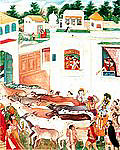 Plate 27 - Bhagavad-gita 8.21 - WHEN ONE GOES TO THE SUPREME ABODE HE NEVER COMES BACK - "That supreme abode is called unmanifested and infallible, and it is the supreme destination. When one goes there, he never comes back. That is My supreme abode."
Plate 27 - Bhagavad-gita 8.21 - WHEN ONE GOES TO THE SUPREME ABODE HE NEVER COMES BACK - "That supreme abode is called unmanifested and infallible, and it is the supreme destination. When one goes there, he never comes back. That is My supreme abode."
Because Kṛṣṇa is very fond of cows, His own abode is known as Goloka. The word goloka means "planet of the cows",
and those cows are known as Surabhī cows." Kṛṣṇa is habituated to take care of the cows. Just like nowadays any respectable gentleman is supposed to take care of dog, similarly, Kṛṣṇa takes it as hobby, so He has got the hobby of giving protection to the cows. Surabhīr abhipālayantam (Bs. 5.29)
Kṛṣṇa brings His thousands of Surabhi cows back home from the pasture fields at the end of the day.
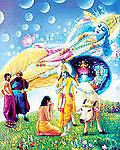 Plate 28 - Bhagavad-gita 9.11 - "FOOLS DERIDE ME WHEN I DESCEND IN HUMAN FORM"
Plate 28 - Bhagavad-gita 9.11 - "FOOLS DERIDE ME WHEN I DESCEND IN HUMAN FORM"
"Fools deride Me when I descend in the human form. They do not know My transcendental nature and My supreme dominion over all that be." The fools mock the humanlike form of Lord Kṛṣṇa, but the devotee offers his obeisances. Behind Kṛṣṇa are Maha-Visnu, Garbhodakasayi Visnu and the entire cosmic manifestation-all working under Kṛṣṇa's direction.
Despite the transcendental qualities of Lord Kṛṣṇa’s body, its full bliss and knowledge, there are many so-called scholars and commentators of Bhagavad-gītā who deride Kṛṣṇa as an ordinary man. The scholar may be born an extraordinary man due to his previous good work, but this conception of Śrī Kṛṣṇa is due to a poor fund of knowledge. Therefore he is called mūḍha, for only foolish persons consider Kṛṣṇa to be an ordinary human being because they do not know the confidential activities of the Supreme Lord and His different energies. They do not know that Kṛṣṇa’s body is a symbol of complete knowledge and bliss, that He is the proprietor of everything that be and that He can award liberation to anyone. Because they do not know that Kṛṣṇa has so many transcendental qualifications, they deride Him.
 Plate 29 - Bhagavad-gita 10.12-13 - ARJUNA OFFERS PRAYERS TO KṚṢṆA.
Plate 29 - Bhagavad-gita 10.12-13 - ARJUNA OFFERS PRAYERS TO KṚṢṆA.
"Arjuna said: You are the Supreme Brahman, the ultimate, the supreme abode and purifier, the Absolute Truth and the eternal divine person. You are the primal God, transcendental and original, and You are the unborn and all-pervading beauty. All the great sages such as Nārada, Asita, Devala, and Vyāsa proclaim this of You, and now You Yourself are declaring it to me."
Arjuna, after hearing the essential four verses of Bhagavad-gītā in this chapter, became completely free from all doubts and accepted Kṛṣṇa as the Supreme Personality of Godhead.
He at once boldly declares, “You are Parambrahma, the Supreme Personality of Godhead.”
In these two verses the Supreme Lord gives a chance to the modern philosopher, for here it is clear that the Supreme is different from the individual soul.
And previously Kṛṣṇa states that He is the originator of everything and everyone. Every demigod and every human being is dependant on Him. Men and demigods, out of ignorance, think that they are absolute and independant of the Supreme Lord Kṛṣṇa. That ignorance is removed perfectly by the discharge of devotional service. This is already explained in the previous verse by the Lord. Now by His grace, Arjuna is accepting Him as the Supreme Truth, in concordance with the Vedic injunction. It is not because Kṛṣṇa is an intimate friend of Arjuna that he is flattering Him by calling Him the Supreme Personality of Godhead, the Absolute Truth. Whatever Arjuna says in these two verses is confirmed by Vedic truth. Vedic injunctions affirm that only one who takes to devotional service to the Supreme Lord can understand Him, whereas others cannot. Each and every word of this verse spoken by Arjuna is confirmed by Vedic injunction.
 Plate 30 - Bhagavad-gita 10.41 - ALL OF CREATION IS BUT A SPARK OF THE SUPREME
Plate 30 - Bhagavad-gita 10.41 - ALL OF CREATION IS BUT A SPARK OF THE SUPREME
"Furthermore, O Arjuna, I am the generating seed of all existences. There is no being—moving or unmoving—that can exist without Me. O mighty conqueror of enemies, there is no end to My divine manifestations. What I have spoken to you is but a mere indication of My infinite opulences. Know that all beautiful, glorious, and mighty creations spring from but a spark of My splendor."
A sampling of Kṛṣṇa's infinite manifestations, both in the spiritual and material worlds. Outer circle (clockwise beginning from the upper left-hand corner): Indra carrying the thundrebolt, the Himalayas, Lord Siva with the Ganges River in his hair, the moon, the horse Ucchaihsrava, the transcendental om, Kapila, Rama, flower-bearing Spring, Kamadhuk, Arjuna, Vyasadeva, Prahlada, the shark, Vasuki, Skanda, Varuna, Yamaraja, the lion, Kuvera, Agni and Airavata. Inner circle, clockwise (beginning from four-headed Lord Brahma sitting on the lotus flower): Brahma, Narada, Garuda, the sun, the ocean, Lord Visnu, Ananta, and the chanting of the holy names-Hare Kṛṣṇa, Hare Kṛṣṇa Kṛṣṇa Kṛṣṇa, Hare Hare/ Hare Rāma Hare Rāma Rāma Rāma Hare Hare.
 Plate 31 - Bhagavad-gita 11.13 - KṚṢṆAS UNIVERSAL FORM
Plate 31 - Bhagavad-gita 11.13 - KṚṢṆAS UNIVERSAL FORM
Kṛṣṇa's universal form is displayed to Arjuna. Still the Lord does not loose His original eternal identy. He remains seated on the chariot with Arjuna.
"O mighty conqueror of enemies, there is no end to My divine manifestations. What I have spoken to you is but a mere indication of My infinite opulences. Know that all beautiful, glorious, and mighty creations spring from but a spark of My splendor. With a single fragment of Myself I pervade and support this entire universe."
The Supreme Lord is represented throughout the entire material universes by His entering into all things as the Supersoul. The Lord here tells Arjuna that there is no point in understanding how things exist in their separate opulence and grandeur. He should know that all things are existing due to Kṛṣṇa’s entering them as Supersoul. From Brahmā, the most gigantic entity, on down to the smallest ant, all are existing because the Lord has entered each and all and is sustaining them.
 Plate 32 - Bhagavad-gita 11.50 - Kṛṣṇa'S TWO ARMED FORM
Plate 32 - Bhagavad-gita 11.50 - Kṛṣṇa'S TWO ARMED FORM
After showing Arjuna His universal form, Kṛṣṇa shows him His four-handed Nārāyaṇa form in which He presides over all the spiritual planets. Then He changes to His two-handed form to show everyone that He is the source of the universe and the source of Nārāyaṇa.
"When Arjuna thus saw Kṛṣṇa in His original form, he said: Seeing this humanlike form, so very beautiful, my mind is now pacified, and I am restored to my original nature."
In the forty-eighth verse of this chapter Lord Kṛṣṇa concluded revealing His universal form and informed Arjuna that this form is not possible to be seen by so many activities, sacrifices, etc. Now here the word sudurdarśam is used, indicating that Kṛṣṇa’s two-handed form is still more confidential. One may be able to see the universal form of Kṛṣṇa by adding a little tinge of devotional service to various activities like penance, Vedic study and philosophical speculation, etc. It may be possible, but without a tinge of bhakti, one cannot see; that has already been explained. Still, beyond that universal form, the form of Kṛṣṇa as a two-handed man is still more difficult to see, even for demigods like Brahmā and Lord Śiva. They desire to see Him, and we have evidences in the Śrīmad-Bhāgavatam that when He was supposed to be in the womb of His mother, Devakī, all the demigods from heaven came to see the marvel of Kṛṣṇa. They even waited to see Him. A foolish person may deride Him, but that is an ordinary person. Kṛṣṇa is actually desired to be seen by demigods like Brahmā and Śiva in His two-armed form.
 Plate 33 - Bhagavad-gita 12.6-7 - Kṛṣṇa DELIVERS HIS DEVOTEE FROM THE OCEAN OF BIRTH AND DEATH
Plate 33 - Bhagavad-gita 12.6-7 - Kṛṣṇa DELIVERS HIS DEVOTEE FROM THE OCEAN OF BIRTH AND DEATH
Kṛṣṇa, who is riding on His feathered carrier Garuda, promises, that He will personally rescue his devotee from the ocean of birth and death. "For one who worships Me, giving up all his activities unto Me and being devoted to Me without deviation, engaged in devotional service and always meditating upon Me, who has fixed his mind upon Me, O son of Pṛthā, for him I am the swift deliverer from the ocean of birth and death."
The Supreme Lord herein promises that He will without delay deliver a pure devotee thus engaged from the ocean of material existence. The responsibility is taken by the Supreme Lord Himself. He clearly states here that He Himself becomes the deliverer. A child is completely cared for by his parents, and thus his position is secure. Similarly, a devotee does not need to endeavor to transfer himself by yoga practice to other planets. Rather, the Supreme Lord, by His great mercy, comes at once, riding on His bird carrier Garuḍa, and at once delivers the devotee from this material existence. Although a man who has fallen in the ocean may struggle very hard and may be very expert in swimming, he cannot save himself. But if someone comes and picks him up from the water, then he is easily rescued. Similarly, the Lord picks up the devotee from this material existence. One simply has to practice the easy process of Kṛṣṇa consciousness and fully engage himself in devotional service. Any intelligent man should always prefer the process of devotional service to all other paths.
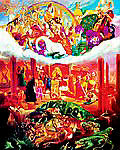 Plate 34 - Bhagavad-gita 14.14-18 - THE THREE MODES OF NATURE
Plate 34 - Bhagavad-gita 14.14-18 - THE THREE MODES OF NATURE
"Those situated in the mode of goodness gradually go upward to the higher planets; those in the mode of passion live on the earthly planets; and those in the mode of ignorance go down to the hellish worlds."
When one dies in the mode of goodness, he attains to the pure higher planets. When one dies in the mode of passion, he takes birth among those engaged in fruitive activities; and when he dies in the mode of ignorance, he takes birth in the animal kingdom.
In the Fourteenth Chapter the three divisions of the modes of material nature were elaborately described. In that chapter it was said that the mode of goodness is illuminating, the mode of passion materialistic, and the mode of ignorance conducive to laziness and indolence. All the modes of material nature are binding; they are not sources of liberation. Even in the mode of goodness one is conditioned. In the Seventeenth Chapter, the different types of worship by different types of men in different modes of material nature were described. In this verse, the Lord wishes to speak about the different types of knowledge, workers, and work itself according to the three material modes. (Bg 18.19)
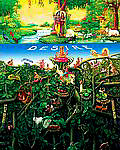 Plate 35 - Bhagavad-gita 15.1-3 - THE MATERIAL WORLD IS A REFLECTION OF THE SPIRITUAL WORLD
Plate 35 - Bhagavad-gita 15.1-3 - THE MATERIAL WORLD IS A REFLECTION OF THE SPIRITUAL WORLD
"The Blessed Lord said: There is a banyan tree which has its roots upward and its branches down and whose leaves are the Vedic hymns. One who knows this tree is the knower of the Vedas. The branches of this tree extend downward and upward, nourished by the three modes of material nature. The twigs are the objects of the senses. This tree also has roots going down, and these are bound to the fruitive actions of human society. The real form of this tree cannot be perceived in this world. No one can understand where it ends, where it begins, or where its foundation is. But with determination one must cut down this tree with the weapon of detachment. So doing, one must seek that place from which, having once gone, one never returns, and there surrender to that Supreme Personality of Godhead from whom everything has begun and in whom everything is abiding since time immemorial."
Kṛṣṇa and His eternal consort, Radharani, are shown in Their eternal abode, Goloka Vrndavana. The upside-down tree below Them is the banyan tree, representing the material world, which is a perverted reflection of the spiritual world. The demigods are on the top branches, the human beings are on the middle branches, and the animals are on the lower branches. On the right a man is disentangling himself from the tree by cutting it with the weapon of detachment.
 Plate 36 - Bhagavad-gita 15.6 - THE SPIRITUAL AND MATERIAL WORLDS
Plate 36 - Bhagavad-gita 15.6 - THE SPIRITUAL AND MATERIAL WORLDS
"That abode of Mine is not illumined by the sun or moon, nor by electricity. One who reaches it never returns to this material world."
The spiritual world, the abode of the Supreme Personality of Godhead, Kṛṣṇa -which is known as Kṛṣṇaloka, Goloka Vṛndāvana - is described here. In the spiritual sky there is no need of sunshine, moonshine, fire or electricity, because all the planets are self-luminous. We have only one planet in this universe, the sun, which is self-luminous, but all the planets in the spiritual sky are self-luminous. The shining effulgence of all those planets (called Vaikuṇṭhas) constitutes the shining sky known as the brahmajyoti. Actually, the effulgence is emanating from the planet of Kṛṣṇa, Goloka Vṛndāvana. Part of that shining effulgence is covered by the mahat-tattva, the material world. Other than this, the major portion of that shining sky is full of spiritual planets, which are called Vaikuṇṭhas, chief of which is Goloka Vṛndāvana.
The huge lotus is the original spiritual planet, Goloka Vrndavana, the abode of Radha and Kṛṣṇa. The spiritual effulgence around this planet is the brahmajoyti, which is the ultimate goal of the impersonalists. Within the universal brahmajoyti are innumerable spiritual planets which are dominated by plenary expansions of Lord Krsna and inhabited by ever-liberated living beings. Sometimes a spiritual cloud overtakes a corner of the spiritual sky, and the covered portion is called mahat-tattva, or the material sky. The Lord, as Maha Visnu, lies down in the water within the mahat-tattva, which is called the Causal Ocean. Maha Visnu enters each universe as Garbhodakasayi Visnu and lies in the Garbha Ocean on the serpentine Sesa incarnation. From His navel a lotus stem sprouts, ad d on the lotys, Brahma, the Lord of the universe, is born. Brahma creates all the living beings in different shapes in terms of their desires within the universe. He also creates the sun, moon and other demigods.
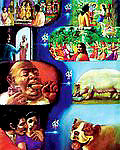 Plate 37 - Bhagavad-gita 15.8 - AS YOU SOW,YOU SHALL REAP
Plate 37 - Bhagavad-gita 15.8 - AS YOU SOW,YOU SHALL REAP
"The living entity in the material world carries his different conceptions of life from one body to another as the air carries aromas."
Here the living entity is described as īśvara, the controller of his own body. If he likes, he can change his body to a higher grade, and if he likes he can move to a lower class.
Minute independence is there. The change his body undergoes depends upon him.
At the time of death, the consciousness he has created will carry him on to the next type of body.
If he has made his consciousness like that of a cat or dog, he is sure to change to a cat’s or dog’s body. And, if he has fixed his consciousness on godly qualities, he will change into the form of a demigod. And, if he is in Kṛṣṇa consciousness, he will be transferred to Kṛṣṇaloka in the spiritual world and will associate with Kṛṣṇa. It is a false claim that after the annihilation of this body everything is finished. The individual soul is transmigrating from one body to another, and his present body and present activities are the background of his next body. One gets a different body according to karma, and he has to quit this body in due course. It is stated here that the subtle body, which carries the conception of the next body, develops another body in the next life. This process of transmigrating from one body to another and struggling while in the body is called karṣati or struggle for existence.
Top section: On the left, a boy is dancing before the Deities of Radha-Krsna. The result of such devotional consciousness is shown on the right, where he is dancing with Krsna as a playmate in the Lord's spiritual abode. Second section: On the left a man is offering charity to a brahmana; on the right he has taken the body of a demigod and is enjoying heavenly delights. Third section: A man is eating meat and other abominable foods; in his next life he is seen in the body of a hog who eats anything and everything. Bottom section: A man is approaching a women with lust. This bestial consciousness carries him to a dog's body.
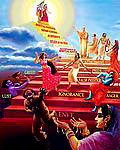 Plate 38 - Bhagavad-gita 16.5,21 - THE CHAINS OF ATTACHMENT
Plate 38 - Bhagavad-gita 16.5,21 - THE CHAINS OF ATTACHMENT
Two men (standing where the stairway makes its turn) are being offered both liberation and bondage. One man looks upward, following the spiritual master who points toward Sri Radha-Krsna. The other man embraces the demoniac qualities by accepting the garland offered by Maya, Krsna's illusory energy. Drawn by ropes which are held by the personifications of lust, greed, and anger, he follows her down the steps. At the bottom he is reaching for Maya, and gliding towards hell.
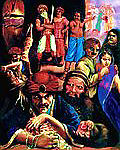 Plate 39 - Bhagavad-gita 16.10-18 - LUST, GREED AND ANGER LEAD TO HELL
Plate 39 - Bhagavad-gita 16.10-18 - LUST, GREED AND ANGER LEAD TO HELL
The demoniac mentality is described here. The demons’ lust is never satiated. They will go on increasing and increasing their insatiable desires for material enjoyment. Although they are always full of anxieties on account of accepting nonpermanent things, they still continue to engage in such activities out of illusion. They have no knowledge and cannot tell that they are heading the wrong way. Accepting nonpermanent things, such demoniac people create their own God, create their own hymns and chant accordingly. The result is that they become more and more attracted to two things—sex enjoyment and accumulation of material wealth. The word aśuci-vratāḥ, unclean vow, is very significant in this connection. Such demoniac people are only attracted by wine, women, gambling and meat eating; those are their aśuci, unclean habits. Induced by pride and false prestige, they create some principles of religion which are not approved by the Vedic injunctions. Although such demoniac people are most abominable in the world, still, by artificial means, the world creates a false honor for them. Although they are gliding toward hell, they consider themselves very much advanced.
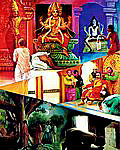 Plate 40 - Bhagavad-gita 17.4 - THE DIVISIONS OF FAITH
Plate 40 - Bhagavad-gita 17.4 - THE DIVISIONS OF FAITH
Men in the mode of goodness worship the demigods; those in the mode of passion worship the demons; and those in the mode of ignorance worship ghosts and spirits.
Those who are situated in goodness generally worship the demigods, which include Brahmā, Śiva and others such as Indra, Candra and Surya, the sun-god. Similarly, those who are in the mode of passion create their own gods and worship the demons. Those who are in the mode of ignorance, in darkness, worship dead spirits and ghosts. Sometimes people worship at the tomb of some dead man. Lower class people sometimes go to the forest, and if they have knowledge that a ghost lives in a tree, they worship that tree and offer sacrifices.
These different kinds of worship are not actually God worship. God worship is for persons who are transcendentally situated in pure goodness. In the Śrīmad-Bhāgavatam it is said, sattvaṁ viśuddham vāsudeva-śabditam. “When a man is situated in pure goodness, he worships Vāsudeva.” The purport is that those who are completely purified of the material modes of nature and who are transcendentally situated can worship the Supreme Personality of Godhead.
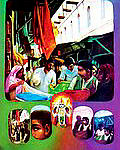 Plate 41 - Bhagavad-gita 18.14 - THE FIVE FACTORS OF ACTION
Plate 41 - Bhagavad-gita 18.14 - THE FIVE FACTORS OF ACTION
"O mighty-armed Arjuna, learn from Me of the five factors which bring about the accomplishment of all action. These are declared in sāṅkhya philosophy to be the place of action, the performer, the senses, the endeavor, and ultimately the Supersoul."
For a action to be successful fife factors have to be considered: Endeavor means energy which is employed. For anything one does there must be some activity; that is the endeavor. The place must be favorable, the activities must be authorized, the doer (the man who is acting) must be expert, the instruments must be fit, and the help from the Supersoul must be adiquate. These are the five causes for success, and the opposite are the five causes for failure.
Here a man is conducting business. If he goes to the marketplace it will be very nice, since there are so many customers. Similarly, one looking for spiritual life goes to where there are devotees and associates with them. One must go to a particular type of place for a particular type of activity, and the person acting must be well-versed, or expert, just like an expert salesman whose method of business is bona fide. The senses must be in order, to guard against cheating, hear offers, etc. Above all is the help from Supersoul, who dictates in such a way that everything is successful, spiritually or materially. Among the five factors portrayed here, the endeavor is the business which is being conducted.
 Plate 42 - Bhagavad-gita 18.41-46 - BY PERFORMING HIS DUTY FOR THE SUPREME THE LIVING ENTITY IS PERFECTED
Plate 42 - Bhagavad-gita 18.41-46 - BY PERFORMING HIS DUTY FOR THE SUPREME THE LIVING ENTITY IS PERFECTED
"By worship of the Lord, who is the source of all beings and who is all-pervading, man can, in the performance of his own duty, attain perfection." Brāhmaṇas, kṣatriyas, vaiśyas and śūdras are distinguished by their qualities of work, O chastiser of the enemy, in accordance with the modes of nature.
While engaged in their prescribed duties, these four representatives of the four social orders (varnas) are thinking of Lord Kṛṣṇa and offering Him the results of their work.
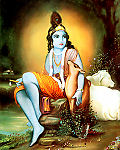 Plate 43 - Bhagavad-gita 18.65 - Gopala Kṛṣṇa, the beautiful original form of the Lord.
Plate 43 - Bhagavad-gita 18.65 - Gopala Kṛṣṇa, the beautiful original form of the Lord.
"Always think of Me and become My devotee. Worship Me and offer your homage unto Me. Thus you will come to Me without fail. I promise you this because you are My very dear friend."
The most confidential part of knowledge is that one should become a pure devotee of Kṛṣṇa and always think of Him and act for Him. One should not become an official meditator. Life should be so molded that one will always have the chance to think of Kṛṣṇa. One should always act in such a way that all his daily activities are in connection with Kṛṣṇa. He should arrange his life in such a way that throughout the twenty-four hours he cannot but think of Kṛṣṇa. And the Lord’s promise is that anyone who is in such pure Kṛṣṇa consciousness will certainly return to the abode of Kṛṣṇa, where he will be engaged in the association of Kṛṣṇa face to face. This most confidential part of knowledge is spoken to Arjuna because he is the dear friend of Kṛṣṇa.
Everyone who follows the path of Arjuna can become a dear friend to Kṛṣṇa and obtain the same perfection as Arjuna. These words stress that one should concentrate his mind upon Kṛṣṇa—the very form with two hands carrying a flute, the bluish boy with a beautiful face and peacock feathers in His hair. There are descriptions of Kṛṣṇa found in the Brahma-saṁhitā and other literatures. One should fix his mind on this original form of Godhead, Kṛṣṇa. He should not even divert his attention to other forms of the Lord. The Lord has multi-forms, as Viṣṇu, Nārāyaṇa, Rāma, Varāha, etc., but a devotee should concentrate his mind on the form that was present before Arjuna. Concentration of the mind on the form of Kṛṣṇa constitutes the most confidential part of knowledge, and this is disclosed to Arjuna because Arjuna is the most dear friend of Kṛṣṇa’s.
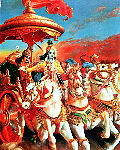 - Bhagavad-gita 18.78 - WITH KṚṢṆA THERE IS VICTORY
- Bhagavad-gita 18.78 - WITH KṚṢṆA THERE IS VICTORY
Kṛṣṇa and Arjuna's on the chariot driving towards victory. "Wherever there is Kṛṣṇa, the master of all mystics, and wherever there is Arjuna, the supreme archer, there will also certainly be opulence, victory, extraordinary power, and morality. That is my opinion."
The Bhagavad-gītā began with an inquiry of Dhṛtarāṣṭra. He was hopeful of the victory of his sons, assisted by great warriors like Bhīṣma, Droṇa and Karṇa. He was hopeful that the victory would be on his side. But, after describing the scene in the battlefield, Sañjaya told the King, “You are thinking of victory, but my opinion is that where Kṛṣṇa and Arjuna are present, there will be all good fortune.” He directly confirmed that Dhṛtarāṣṭra could not expect victory for his side. Victory was certain for the side of Arjuna because Kṛṣṇa was there. Kṛṣṇa’s acceptance of the post of charioteer for Arjuna was an exhibition of another opulence. Kṛṣṇa is full of all opulences, and renunciation is one of them. There are many instances of such renunciation, for Kṛṣṇa is also the master of renunciation.
